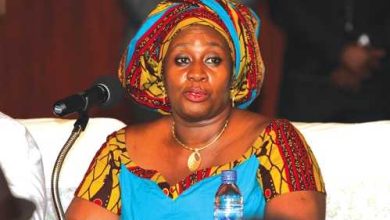

Governor of the Bank of Ghana Dr Ernest Addison has stated that prices of Ghana’s major export commodities (cocoa, gold and crude oil) traded mixed on the international market in the first half year.
He said cocoa prices surged to record highs last seen over a decade ago, triggered by tight supplies from West Africa coupled with expectations of a global deficit in the 2022/2023 crop season.
On a year-to-date basis, cocoa beans gained 25.5 percent to settle at US$3,185.29 per tonne in June 2023, he said.
Dr Addison further said that from the beginning of the year to June 2023, the Bank of Ghana has built up US$1 billion in reserves, mainly coming from its gold purchase programme, and settlement of short-term liabilities,
Gross International Reserves, excluding encumbered assets and petroleum funds, improved to US$2,353.95 million equivalent to 1.1 months of import cover, compared with US$1,440.0 million, 0.6 months of import cover, recorded at the end of December 2022, he said.
The Bank’s Domestic Gold Purchase Programme was launched in June 2021 with
the key objective of shoring up the Bank of Ghana’s foreign reserves by purchasing
domestically produced gold and converting same into foreign assets.
“Since inception of the programme, a total of 7.73 tons of monetary gold, valued at
approximately US$480 million, has been added to reserves under the Gold for
Reserves programme, well ahead of the target of doubling the gold holdings in 5
years,” Dr Addison revealed during the 113th Monetary Policy Committee (MPC) press conference in Accra on Monday, July 24.
International benchmark crude oil prices lost 7.8 percent in the year to close at US$74.98 per barrel due to concerns that sluggish global growth could reduce
energy demand. However, decisions by OPEC+ to deepen production cuts
moderated the losses somewhat.
The price of gold went up by 8.1 percent year-to-date to settle at US$1,942.07 per fine ounce as increased fears over global recession and possible slower interest rate hikes in the United States loom. Increased demand for the metal from China also helped push up prices.
In the first six months, the trade balance improved significantly to a surplus of US$1.8
billion, compared with US$1.5 billion a year earlier, mainly on account of a 13.4
percent decline in imports which outweighed a 7.9 percent drop in export earnings.
“The decline in total export earnings was due to lower earnings from crude oil. Higher
gold and cocoa exports earnings moderated the losses. Crude oil exports dropped
by 41.3 percent to US$1.7 billion, driven by lower production volumes from the Jubilee
and TEN fields and decline in world prices. Gold exports, on the other hand,
increased by 14.2 percent to US$3.5 billion.
“The trade surplus, together with lower outflows in the investment income from lower
external debt service payments due to the debt standstill, resulted in a current
account surplus of US$849.2 million, compared with a US$1.1 billion deficit recorded
a year earlier. Similarly, the capital and financial account recorded reduced net
outflow of US$897.3 million, on the back of lower outflows in the financial accounts,” he said.






